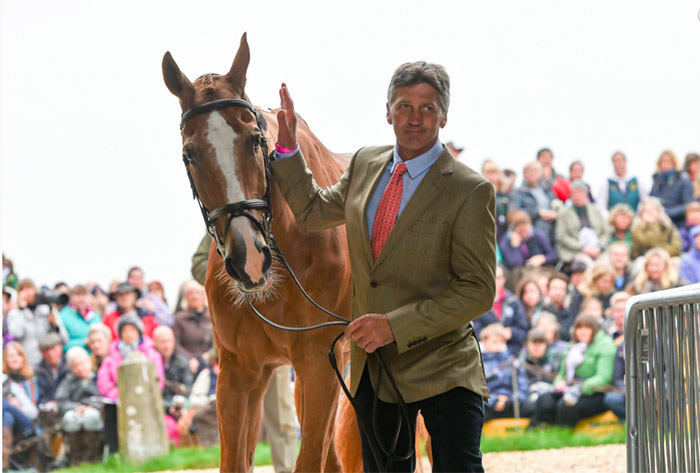
Chris Hector interviews Andrew Nicholson and then celebrates his extraordinary career…
That was the provocative suggestion from Andrew Nicholson at the FEI Risk Management Summit in a presentation that has been widely distributed on the FEI website.
In a THMdigital exclusive, Andrew has outlined his concerns that inappropriate training and bad riding are making the sport more dangerous…
You feel commercial cross country schooling courses have made the cross country schooling too predictable for the horses?
“I don’t know what it is like in Australia, but here in England we have some very good schooling places. You hire the facilities, and they are very good, but they are nearly always, pretty much a flat surface. The other thing is that the jumps are all laid out in a very simple manner, because the schooling people don’t want riders falling off. A lot of riders don’t have much of an idea of what they should be doing, so they will jump anything that’s built. It’s very rarely you will see a vertical in among the schooling fences – lots of roll top things, a lot of filled in things, but just a plain simple type vertical, you don’t find them, and verticals are what I’ve always done a lot of with my young horses at home.”
“In particular, I like to use a vertical, ninety degree turn, vertical. It looks simple, but it is quite difficult to do if you haven’t done it before. It teaches you to sit on your backside and ride.”
What distance is that from the vertical to vertical?
“It would walk four strides on a 90 degree turn, but it would ride five strides because you are doing a 90 degree bend. If it is the first time you are doing it, for sure the horse is going to think it is going straight on. I don’t mean that you should angle across the first one, jump the first one in the centre, straight, then you have to turn and jump the second one straight. I would put four of them on a circle, like a clock, 12 o’clock, 3 o’clock, 6 o’clock, 9 o’clock… They don’t have to be big, it’s for the rider to get the understanding that you have to sit and work. I don’t mean that you have to maul them around, like a monkey round a pole, it is just sit on their back as they land, and turn to the next element and fix the distance as you are going. All you are doing is fixing the stride pattern as you are going along.”
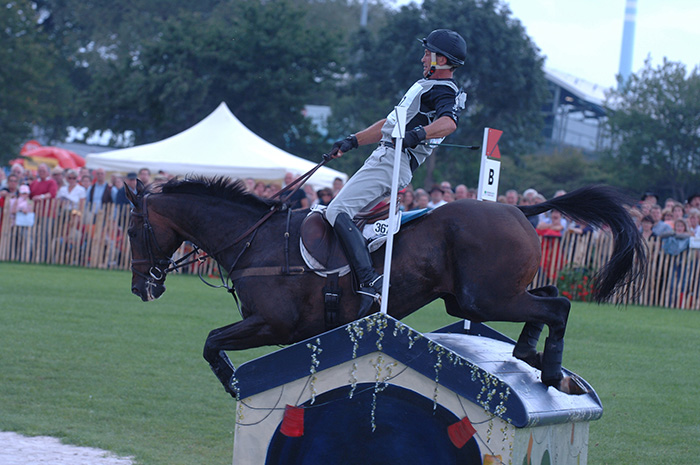
Andrew stressed to the Risk Management Summit that riders needed to have the understanding of what to do with their bodies when they were going to be too deep to the fence. It was one thing knowing how to fall, but it was another to know what to do when things went wrong at the jump and what could be done. It could only be learned by doing mistakes. This was why it was very difficult to make the sport safe. Here he demonstrates what he was talking about on Lord Killinghurst.
You think many problems come from bad riding?
“Cross country, a lot of riders – and I am not talking about the top riders – the lower grades ones, they love the fences they gun their horses at, they don’t even look for a stride, they don’t feel what they are doing, they are just running them at the fences.”
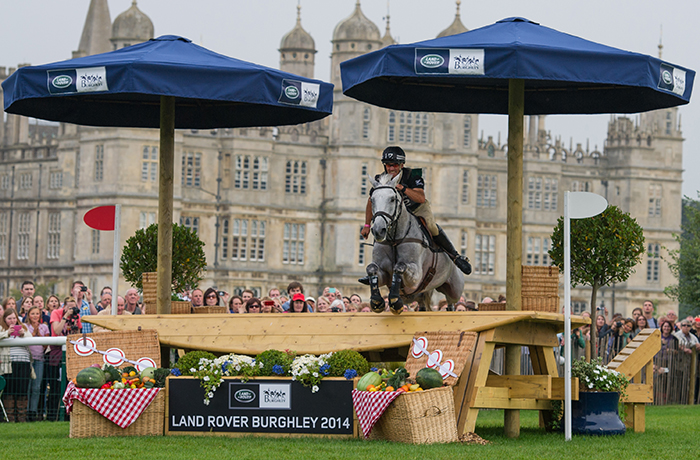
Andrew and Avebury at Burghley
You are critical of riders not getting their horse between leg and hand when going across country…
“A lot of them seem to just sit on the horses and run them at top speed. Too many are riding at speed, they were told to ride in a rhythm, and they think it is riding in top gear around the course. The very good riders can change gear without it being perceptible. It is upsetting to hear experienced riders saying that they ‘just’ galloped at fences. It is necessary to look for a distance and the strides need to be fixed, by either holding the horse, or putting a bit more leg pressure.”
more follows
Does that mean there is a deficiency in their flat work as well as they cross country work?
“I think at the lower levels, the flatwork goes out the window when they walk into the cross country start box. I watch them cross country schooling and it seems dressage and showjumping go out the window, they think cross country is a speed thing, when really it is the same idea as the dressage and the showjumping, you just go faster. When you want to turn, you should be able to turn, when you want to whoa up, the horse should whoa up, when you want to go forward, the horse should go forward. It’s those simple basic things that have been lost because at so many of these schooling places, you can teach young horses to pretty much jump everything in front of them before they go to an event.”
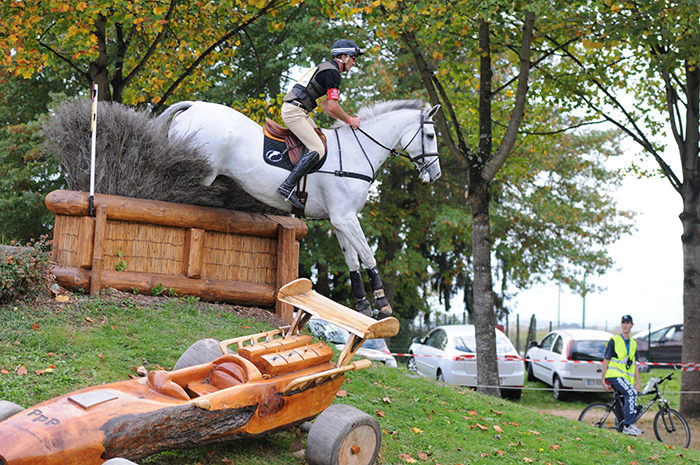
Andrew and Cruise Control, on course at Pau
You feel that the two-star courses are too similar – and they are making it too big a jump when they go three-star…
“Yep. I know riders will complain, but what I would like to see is one and two-star classes that are not as smooth to ride, and I think they are starting to do that in the national classes in Britain. The riders might complain if they are not as smooth, but you learn an awful lot more from them as a rider. You have to slow down before you turn to jump Element A, and then the turn to jump Element B, is not a naturally smooth one.”
“You need a course designer who has this feel to be able to build it properly. There’s enough designers with the feel about, it’s just getting them into the system. There’s too many at the lower levels that have got into the system of having rolltops, skinny triple brush arrowheads and then turn to something similar – or a rolltoppy box turn. It’s much easier to jump a vertical and turn, than a spread type fence, yet they don’t seem to use the vertical ones, because riders don’t like verticals. I can never work out why that is, because in showjumping they only have two fences to warm up over, and one’s an oxer, and one’s a vertical. Yet at the lower levels, it’s all boxy things, and you don’t see a lot of verticals. Or brushy boxes which horses don’t land the same over as you would with a normal vertical, you can sit easier on a horse’s back and turn it more smoothly.”
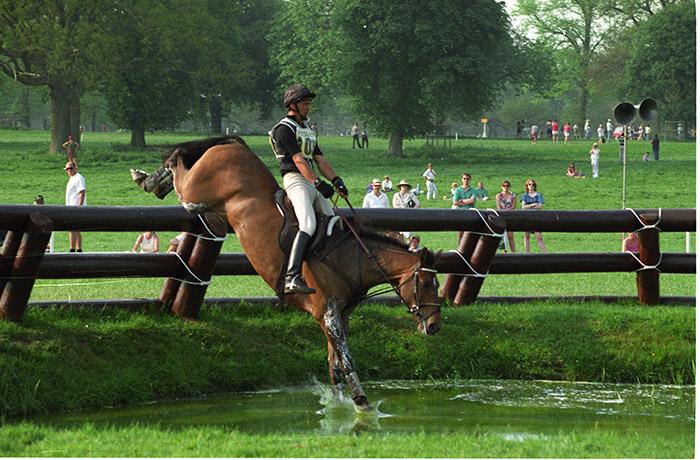
Andrew and Jagermeister at Badminton
Andrew also drew attention to fences with frangible devices, and questioned why the fence needed to be frangible, was it because the fence was in a place where the Course Designer was not completely comfortable? If so it would need to be put in the right place rather than being fitted with frangible devices. He thought the 11 penalties were not enough for breaking a frangible device. The riders felt that if a fence was frangible they could go faster. Fences needed to be respected.
“For example at Badminton, if the Vicarage Vee fence had not been pinned, many athletes with bad jumps before, would have not taken that option. Mentally, the frangible fences were not doing a good job for the riders as they were riding more recklessly.”
“When I walk courses and watch the ones going around, for me they’ve got no real sense of what they are meant to be doing on a cross country course, and I think the way the courses have been designed over the last 10/15 years has encouraged that.”
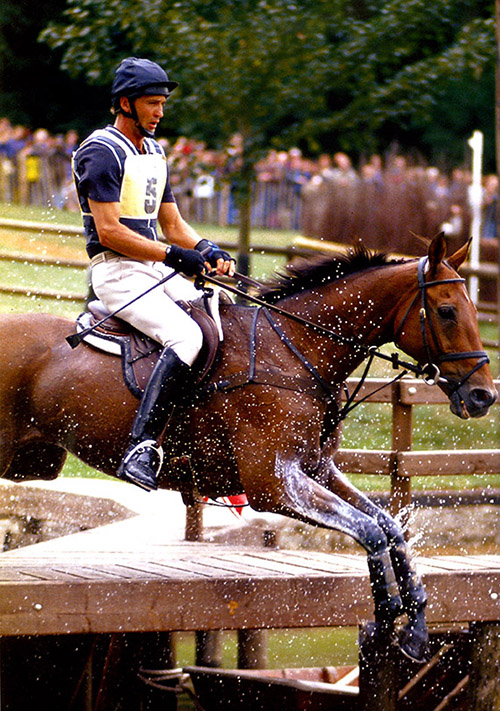
Andrew wins at Burghley on Buckley Province
Andrew Nicholson – A tribute
Born in New Zealand in 1961, Andrew Nicholson has gone on to be one of t the greatest eventing riders of all times.
Just look at the record!
Olympic Games:
1984 – Los Angeles, with Kahlua
1992 – Barcelona, with Spinning Rhombus
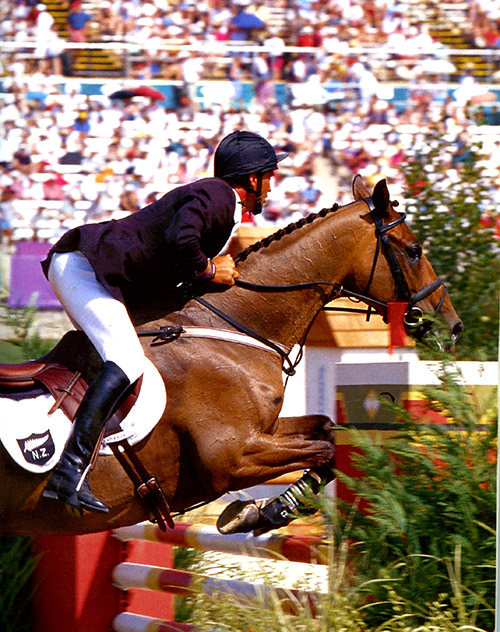
1996 – Atlanta, with Jagermeister (teams) and Buckley Province (individual)
2004 – Athens, with Fenicio
2008 – Beijing, with Lord Killinghurst
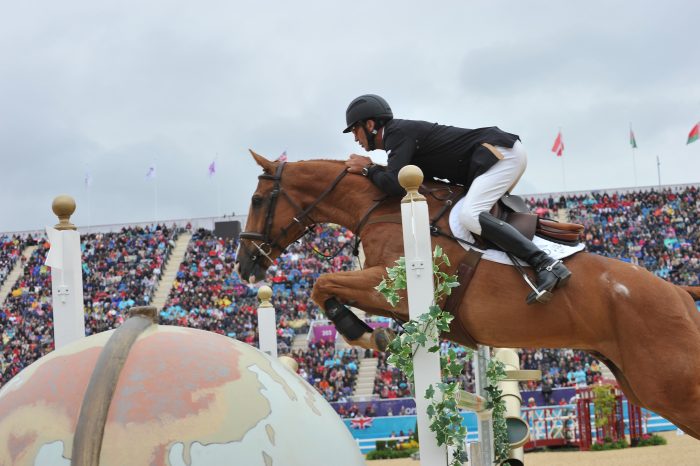
2012 – London, with Nereo
WEGs:
1990 – Stockholm, with Spinning Rhombus
1994 – Den Haag, with Jagermeister
1998 – Rome, with New York
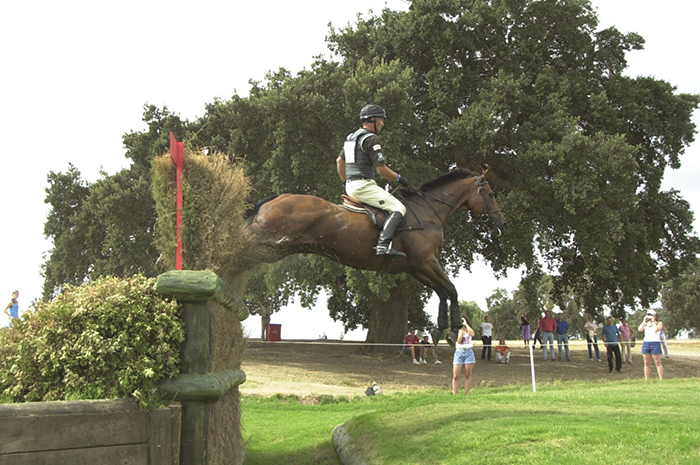
2002 – Jerez, with Fencio
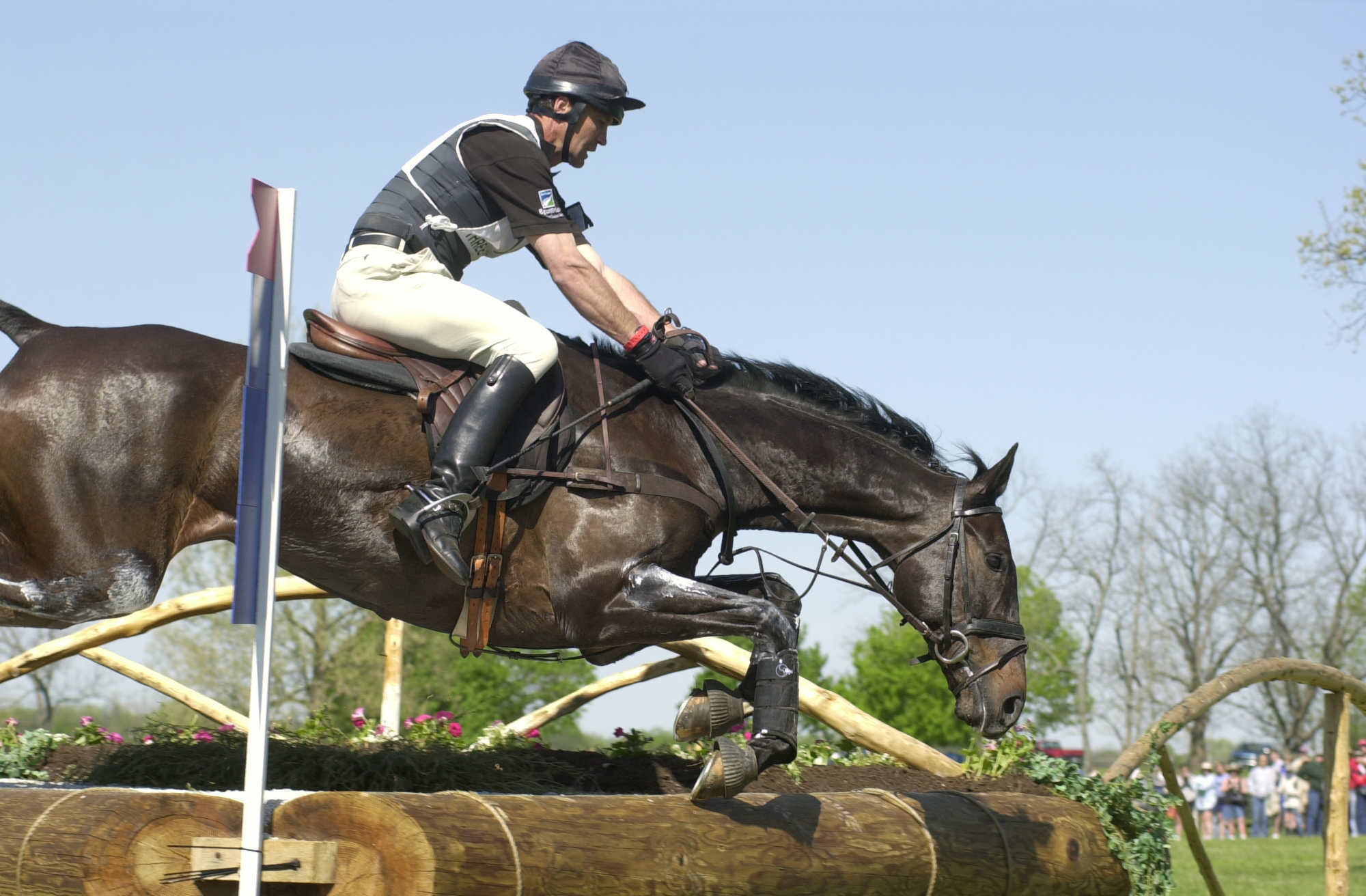
2006 – Aachen, with Lord Killinghurst
2010 – Lexington, with Nereo
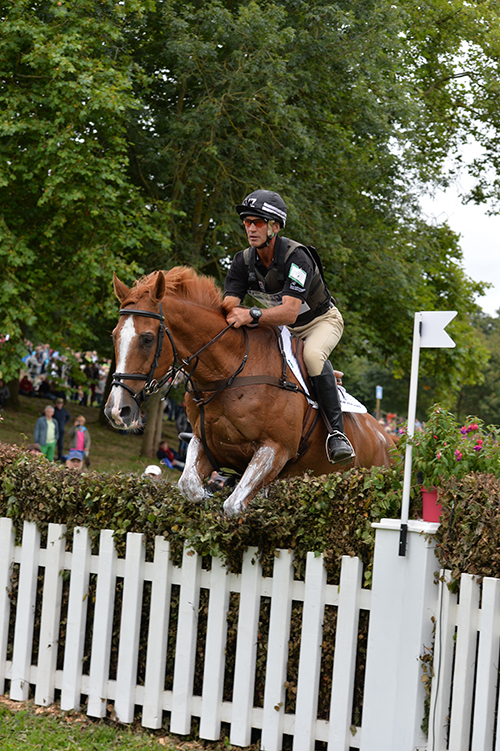
2014 – Caen, with Nereo
In a world of increasingly bland, media trained experts at saying nothing at all, Andrew Nicholson remains his own man. And yes, at times, Nicholson can go over the top, way over the top. I well remember the time at Badminton, when having appeared earlier in the day, and gained what he saw as a less-than-satisfactory score from judge, Richard Meade, Andrew re-appeared for the last test of the day, rode out of the arena and up to the judge’s box, where he informed Meade that he had been judging with his ‘head up his arse’. Later that evening, Andrew auctioned off the yellow card he had received…
But the wild man of eventing seems to have mellowed of recent years, even if he remains on the outer with his Federation after an incident at the 2014 WEG in Caen where Nicholson admitted that he grabbed New Zealand team vet Ollie Pynn by the lapels and shifted him approximately four metres across a corridor, after becoming angry that Nereo was left unattended while on an IV drip following cross country. There are a number of horse persons who feel that Andrew’s ire was perfectly reasonable even if his course of action was perhaps unwise.
Even more amazing has been Andrew’s recovery from a shocking fall from Cillnabradden Evo at the final fence of the British Open at Gatcombe Park in August of 2015.
Andrew released a statement at the time: “In terms of my injury I realise I have been incredibly lucky. My surgeon, Mr Jeremy Reynolds, told me that the injury I sustained to my neck would have caused paralysis at the time of injury in 98% of cases.”
“I was extremely fortunate this did not happen. I underwent an eight-hour operation, where they repaired the fractures and stabilised my cervical spine.
“This procedure in itself was not without risk and I cannot thank enough the team of spinal surgeons at the John Radcliffe hospital for what they have done.
“Obviously I won’t be riding again this season, as it will take some time to fully recover. While I have to take things easy, I am up and about and fully mobile and look forward to getting back to full fitness in due course.”
The come-back has been seriously wonderful. By August 2016, he was back competing, and ended the year with a 2nd at Burghley with Nereo, before taking the horse on to victory at Badminton in May 2017!
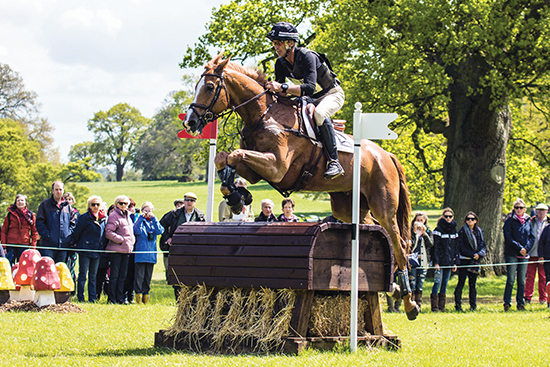
Back winning at the biggest event of all – Badminton – with Nereo
Andrew’s Badminton winner, Nereo is one of a group of horses (including Fenicio who was second in the World Cup final at Pau in 2004) that came from the breeding program of Ramon and Anna Beca, and are by their Thoroughbred stallion, Fines. To find out more about this fascinating breeding program click.
Andrew – A little history
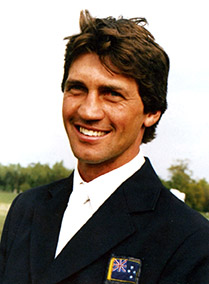
Back in 1996, Andrew talked about his equestrian background with Bernadette Faurie, for the book, Eventing down under:
Ma came off a sheep farm so she had horses around and used to ride to school. I think like most New Zealanders who live on farms, we all have something to do with horses.
My older brother rode, and one of his friends was Warwick Robinson who went on to become one of New Zealand’s top flat jockeys. They used to ride donkeys and I just tagged along behind. It went on from there. My brother’s now a racehorse trainer, and yes, he does pass quite a few horses on to me.
My father knew how to break in, but was never really involved with horses.
We lived next door to the showground where they had showjumping shows and gymkhanas so it was pretty easy to get into that. I started off show jumping. At that time, New Zealand was all showjumping, and you did a bit of hunting and eventing.
Then I think riders started to realise there was more of a future in eventing. I saw a video of the 1978 World Championships and that was my first taste of international horse sport and I thought eventing seemed a great thing.
I was offered an opportunity in England working for Derek Kent, who used to be an international showjump rider and then a top National Hunt trainer. I came over to the UK in 1980, the year Mark Todd first won Badminton on Southern Comfort. My brother knew Mark well and we only lived twelve miles away from him in New Zealand.
I brought a five-year-old over with me to event, eventually sold it, brought another over, and so it went on. I went to Los Angeles in 1984. I got Kahlua, the horse I rode in Los Angeles, in the February of that year, took him to Badminton and then the Olympics and sold him the day after the Games. It was one of the few good deals that come off!
At the end of that year I married Jayne, and we started our own yard. Kahlua was an amazing cross country horse but a very bad showjumper. I think that’s why I got him, to get him to go clear showjumping, but it never happened. He was only about seven years old at the time but he went round Badminton inside the time, then went clear in Los Angeles.
We sold him to a girl who evented him, then her sister rode him and the last I heard he must have been just about to retire. I think the whole family had fun out of him. He was a very genuine horse.
After Kahlua, we went through a stage of selling horses as novices. We sold Bahlua to Mark Todd. We were pretty much on the breadline; we’d just buy them, do a couple of events and sell them. We sold a horse who went on to be fourth in the Pan Am Games, and another, Socrates, who went on to World Championships and Olympics. We were selling good horses to good riders who used to bring them up to a good level, and we needed the money.
The next stage would be when Spinning Rhombus came along. The owners were having trouble riding him, he was being a bit naughty and he came to me to ‘sort out’ for a few weeks and ended up staying six or seven years . He was a thug! Not very big, he was a tough little pony. He was by Magic Circle, who I don’t think left any other lasting memories.
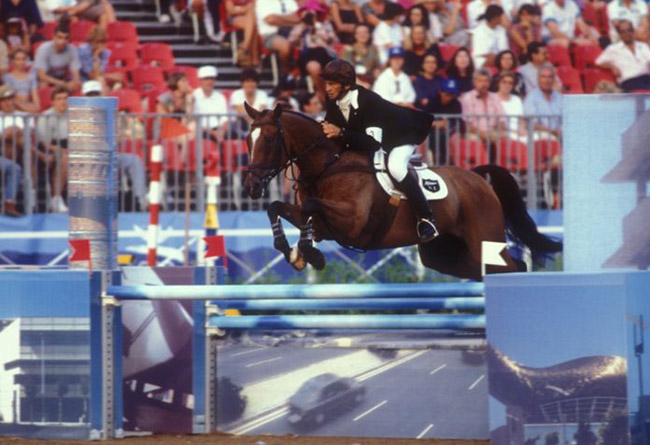
Spinning Rhombus at Barcelona…
Spinning Rhombus had no talent, he was one of the least talented horses I’ve ridden, but the further he used to go in a three-day event the more he wanted to do it. You’d never wear him out, he would just pace himself and his mind could over-rule everything. That’s how he used to jump round the course. It was just mind over matter all the way. It was scary in the early days, but then I got confident that he knew what he was doing and that he knew where his legs were. I used to trust him, he trusted me and away we’d go.
But then as I started to get more scopey horses coming along, I had to make sure I whizzed him round a half decent track before a major competition to get the hang of him again otherwise it was a bit of a shock when you got there.
I think that was the problem with his showjumping. We were trying to get him to do something which he really couldn’t do and the more we tried the worse it became. In the end it was so bad no one really wanted to help.
Now he is a Master’s horse and he takes on anything out hunting.
I have never had a cross-country lesson, I’m pretty much self-taught. I used to go a few times a year to a bloke in New Zealand called Ted Harrison who was a great help for showjumping and dressage. Also when I first came here I had some help with my dressage from Jane Kidd. I learned more from her than from any other dressage person. I was pretty basic when I went to her, having ridden mostly racehorses, and we got along pretty well.
I have lessons occasionally, well actually that’s a lie . When you have 25 horses, which one do you take off for a lesson? I don’t have a lot of time for training, although I think everyone needs help. My wife Jayne is the main influence on my training.
When left New Zealand I was riding an A Grade showjumper that I’d brought up through the grades myself. I suppose you could say I was a Grand Prix rider by New Zealand standards, but then the standard wasn’t very special.
I was six when I started riding. The first pony I had used to buck me off three or four times every time I rode it. He was called Rajah, a little coloured thing. He was mine but he started with my brother, then got handed down to me. I was sad when we swapped him for another one; I hated seeing him go even if he did dump me four times a day.
My ponies were always sold on. From a young age I knew they had to earn their keep. When I was at school I used to ride track-work on the racehorses. Then, when I left, I worked for two different racing trainers in the morning riding yearlings before breakfast, then I would go to a professional horse breaker and ride another twenty for him. That was my education.
Riding just anything might not seem good for your health, but it stops you getting nervous about falling off. Also you learn to hold on to the horses when you do fall off, because you get sick of running after them.
The trainers I worked for were very knowledgeable. One, Bill Sanders, was one of the leading trainers in New Zealand and the other, Mick Brindle, trained a Derby winner. They were real old horsemen. They didn’t stand there and tell you what to do, they would just show you the horse and let you get on with it.
One of the yearlings I worked on, went on to the Derby, one was a Classic horse. I learned very quickly that the horses that went on, were always the ones that were very nice to ride. From the very first time you rode them, they may have bucked but they would have a very nice mind and a very trainable mind.
The ones that were shit in the mind generally didn’t go anywhere. So that was a good lesson to learn, buy horses that have a trainable mind. They can have all the ability but if they’re not going to work with you, forget it. In the future I just want to keep doing well. I wouldn’t go back to New Zealand while I’m still competing at international level. New Zealand is a nice place to be but it’s just not practical.
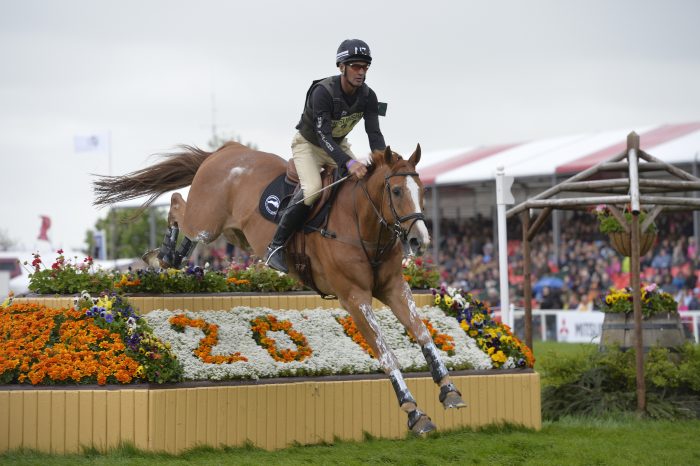




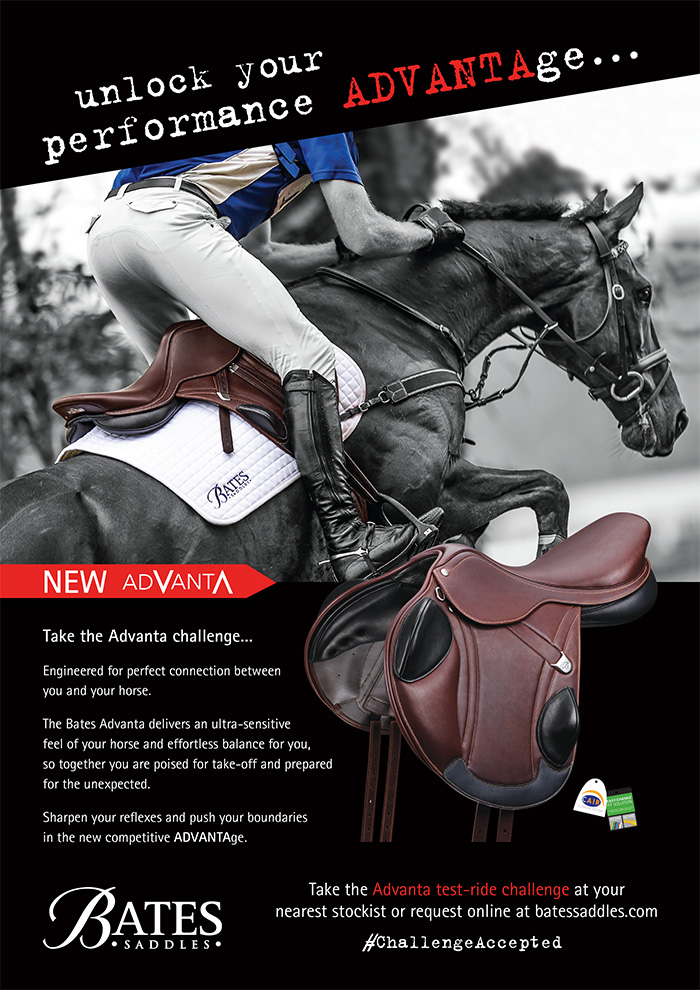
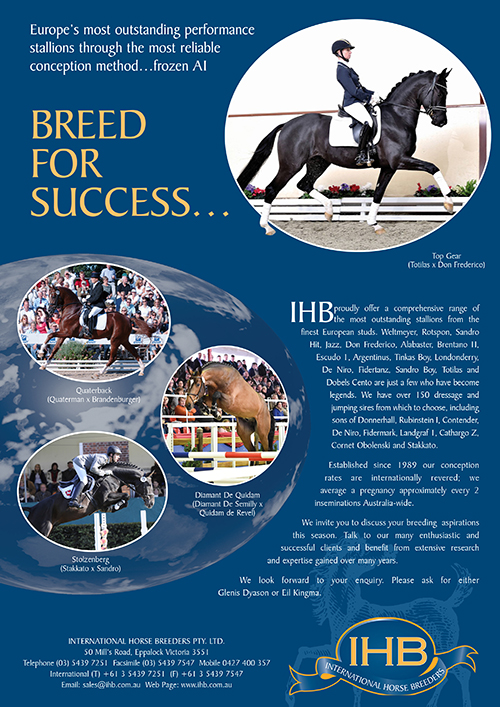
Awesome read! Go Andrew! Great inspiration love watching one of the greats each time you go round!
I once gave Andrew a dressage leson when I was back in Sussex very briefly, think it was 1981. Hhe said then that he didn’t enjoy dressage very much! We both laughed…
You are an inspiration Andrew…you have done all the hard yards and you are the best!
I love Andrew Nicholson, what an enjoyable read. Also, he was bloody well right to grab that idiot vet by the lapel! The man would have had a good smack in the chops from me as well if he’d done that to one of mine.